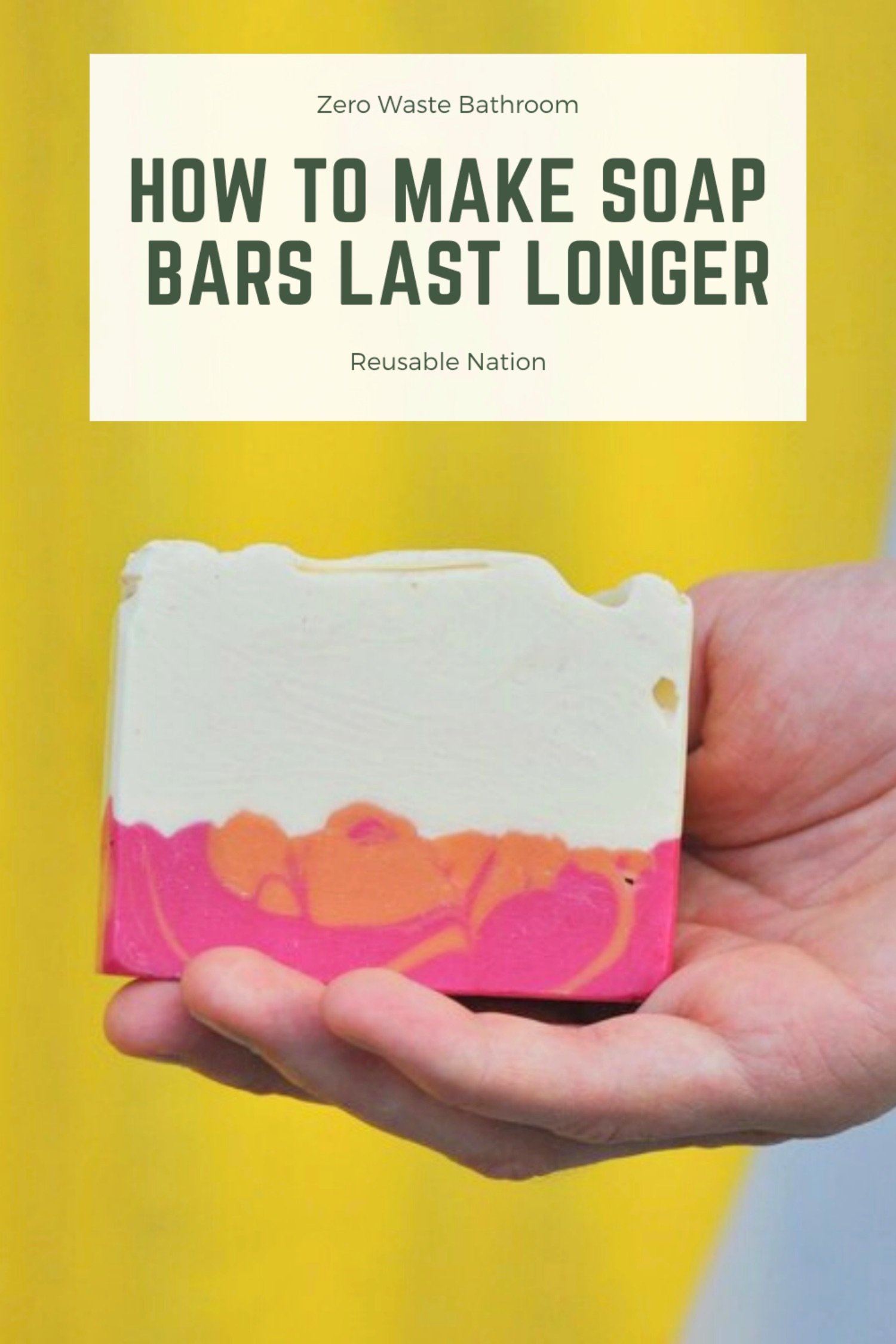How To Make Soap Bars Last Longer & Use Up That Last Bit
A lot of zero waste bathroom switches involve swapping liquids for bars. How can you get the most out of these bars and make them last as long as possible?
There’s nothing better than a brand-new beautifully crafted soap bar! It’s firm and smooth and feels good in your grip, but they soon start to deteriorate, becoming slippery and slimy, trying to escape your grasp at any chance, and quickly degrading into a small hard-to-use sliver.
Soap bars have so many positives - they can be found with zero packaging, they aren’t mostly made up of water like liquid soaps, they are easier to travel with, you can better control the amount of soap used compared to liquid soap, and they scrub the skin more intensely and stimulate circulation and can contain a natural exfoliant.
Interestingly, a 2009 study by the Institute of Environmental Engineering found that liquid soap has a 25% larger carbon footprint than bar soaps due to the manufacturing process and plastic packaging. And they are more economical as well, with bar soap costing about 0.4 cents per hand wash and the liquid soap costing 3.5 cents per wash.
And, if you’re worried about the rumour that bar soaps transfer bacteria from the bar to the skin, researchers have proven that this is not the case and that they are safe and recommended for use to prevent the spread of disease.
But, soap bars’ tendency to waste away, with precious layers of soap sliding off down the drain, and become sludgy, leaving lathery residue and stubbornly sticking to whatever surface they have been placed on, as well as the fact that it is hard to use up the last little sliver of soap, are often complained about.
So, we searched for solutions to these common #soapproblems and found a few tips and tricks to stop this from happening and to ensure your soap bars last as long as possible and as little as possible is wasted.
1. Don’t leave your soap where it gets wet
Constantly wet soap disintegrates quickly and gets slimy, so you want to keep it away from sources of moisture such as the stream of water from the shower head or a tap and condensation in the shower.
After showering, take your soap out of the shower, shake off any extra water, and put it somewhere it can dry out so it doesn’t stay wet and go slimy and leave a puddle of soap scum. This also makes soap less crumbly.
On a windowsill is the ideal place.
2. Store Your Soap Off The Surface
As mentioned above, soap bars need to dry out. The bottom of a soap bar sitting in a pool of water is not going to dry, so you want the least amount of your soap’s surface area to be in contact with the bottom of your soap holder and to store it in a way that enables drainage.
There are a few ways you can do this:
make it stand tall so the smallest surface area in on the surface,
place it on some peddles or marbles,
place it on a piece of loofah, a crocheted or knitted pad made of hemp or a similar material, or a coconut or walnut husk scrubbing brush,
use soap holders that let the soap aerate, for instance ones with bars or big holes like this soap dish (US/CAN), these soap dishes (UK), and this soap dish (AU), or
use a magnet to hold the soap bar up in the air away from any surfaces (Beauty & The Bees sells a wall-mounted magnetic soap holder (AU) or you can try making your own and use a bottle cap to stick a magnet onto the soap).
This ensures air flow around your soap, drying it out completely, and prevents your soap bar from sticking to the surface.
3. Switch bars out
Switch bars out every two weeks or so so that they can dry out completely and harden. The more time your soap spends completely dry, the longer it will last.
It is also recommended that to make soap last longer, if it is not pre-cured (most handcrafted bars are), you should let a soap bar sit out in the open air for six to eight weeks before use to let the soap cure and harden more completely before use.
4. Use a cloth, not your hands
A washcloth or loofah produces and retains lather better than your hands so use less soap overall because the washcloth will create more lather and the suds it creates will go further when cleaning your body than using your hands. The same goes for washing dishes.
Choose one made from natural materials like these: hemp wash cloth (AU), konjac body sponges (UK), natural sea sponge, and agave cloth (both US/CAN) so it can be composted at its end of life.
5. Use a Soap Saver Bag
A soap saver is a pouch you can place your little bits of soap in when they become too small to use easily and the danger of them slipping out of your hands and down the drain is real.
Once you have a few pieces in here you can use the soap-saving pouch to wash with, using up the last dregs of soap inside and exfoliating your skin with the pouch, which acts as a wash cloth.
You can also use to it hang your soap up in the pouch between use so it gets air flow all round and dries out well.
Choose one made from natural materials like these: hemp soap bag (AU) sisal soap pouch (UK), and cotton soap savers (worldwide) so it can be composted at its end of life.
5. Slice the bar into smaller segments
A smaller piece of a soap bar means less to get wet and slimy at one time as it has a smaller surface area overall. So, as you are using a smaller piece each time, only a smaller piece is getting wet each time, while the rest remains dry and ready for use next time.
Does The Type Of Soap Make a Difference to How Long it Lasts?
Yes! In fact it does. Soaps made out of harder fats and oils last longer than those made out of softer, liquid oils. Saturated fats give soap hardness that helps it last longer.
Common saturated fats that are used are tallow (which is beef fat that is a by-product of the meat industry i.e. not vegan), palm oil (which is best avoided due to the environmental problems it is causing), and coconut oil. Another solid fat that is sometimes used is lard, which is from pork so also not vegan. Tallow makes the hardest, longest lasting soap and lard is the next best, providing medium hardness. Vegan vegetable oil-based soaps aren’t as long lasting unfortunately.
Properly cured soap bar also lasts longer. A handmade soap bar should be left to cure for a month before use. This gives it time to harden so it will last longer.
Hopefully these tips help you save some soap! Let us know if you have any soap-saving tips to add in the comments!
*this post contains affiliate links. If you buy something from a featured brand we may earn a small amount. To learn more, see our disclosure policy. We maintain this site in our free time and support in any way, shape or form means a lot and helps us keep it running, whether it is using an affiliate link when investing in something, sharing our content, or buying us a coffee on Ko-fi.



